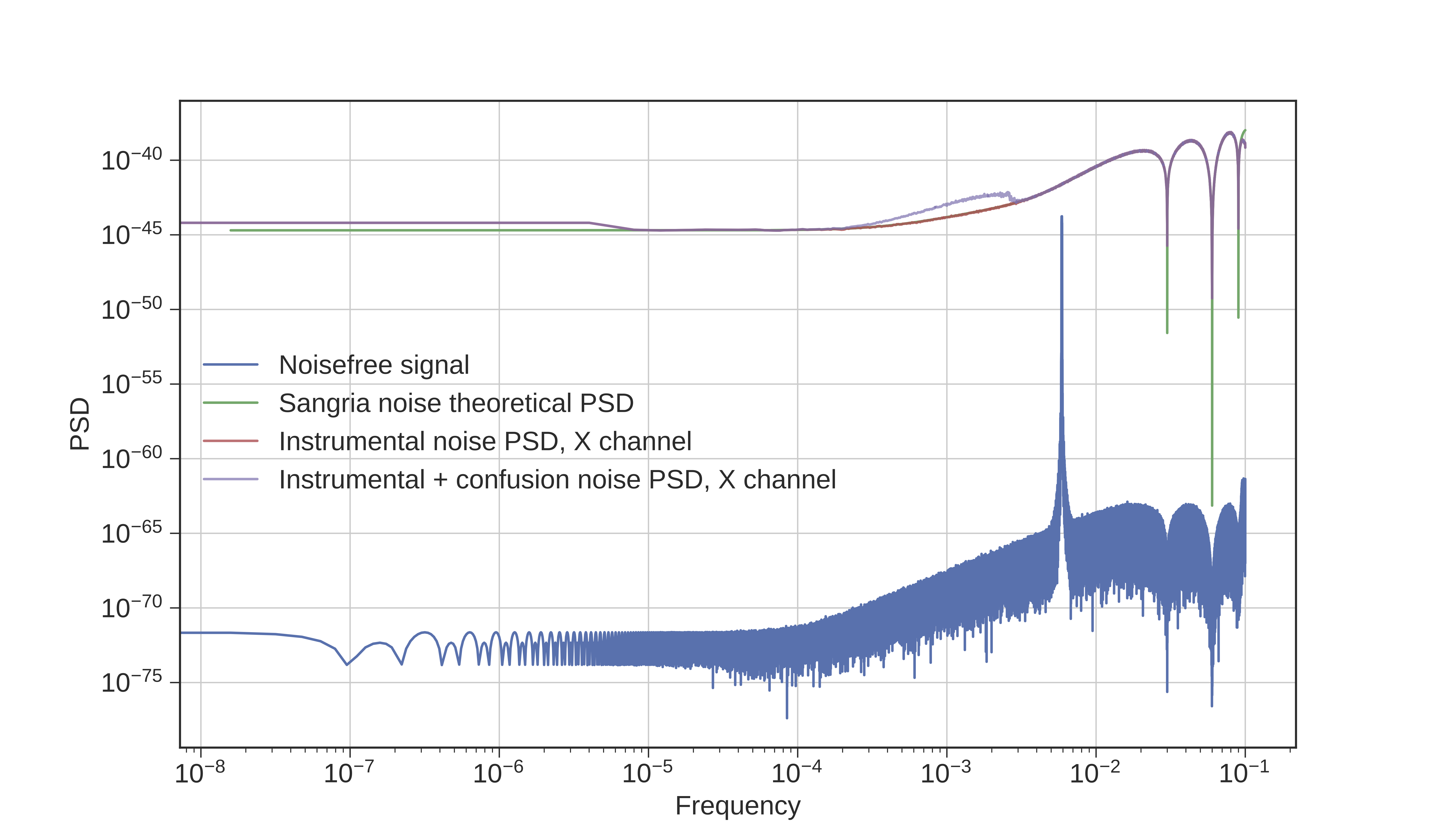LISA Data Challenge 1b: Yorsh
We are glad to announce the release of several datasets in the LISA Data Challenge, codenamed Yorsh. The purpose of this fourth challenge is to tackle the data analysis of complex waveform LISA sources separately, under an idealized instrument-noise model.
Yorsh includes 3 subchallenges, described below. This challenge will not be blind (source parameters are available), but you are welcome to try the analysis without referring to the answer. Furthermore, versions of the datasets without instrument noise are included in the release for EMRI sources only. LDC working-group members will be preparing their own analysis using their algorithms of choice, and invite you to join them (to do so, e-mail us so we can pair you appropriately). Of course, you may organize to work on your own, or with your collaborators.
For usage tracking purposes, we request that you set up a login for this website before downloading the datasets. Please submit your results by March 1st, 2025, using the submission interface and format that will appear shortly on this page. Please plan to include a description of your methods (or a link to a methods paper) with your submission. We would also greatly appreciate it if you were to share your code (e.g., on GitHub, or our GitLab).
While we did our best to check the datasets for correctness, small problems or inconsistencies may have escaped us. The best way to validate the data is to analyze it, so let us know of any problems!
Features common to all datasets
For each source, we produced time series corresponding to the two gravitational-wave polarizations and projected them onto the LISA laser links. The sum of all projections was run through the LISACode software to produce "TDI-2" observables X, Y, Z, expressed as fractional frequency corrections, downsampled to 5-second cadence (for SOBHB sources) or 10-second cadence (for EMRI sources). The datasets cover 2 years of observation: you are welcome to analyze them in full, or in segments of increasing length, reproducing the realistic case where data is progressively downlinked from the spacecraft.
LDC1b-1: Two GW signals from merging stellar-origin binary black holes
LIGO and Virgo have already detected such systems, so let's get LISA on the right path! SOBHBs are represented with a frequency-domain inspiral–merger–ringdown phenomenological model (IMRPhenomD) that has been transformed to time domain thanks to a stationary phase approximation. The black holes are spinning, with spin vectors parallel to the orbital angular momentum. The release includes distinct datasets for two source parameters: one with SNR ~ 10 and another one with SNR ~ 25. For each source, the release includes two distinct files with the noisy and the noise-free TDI signals.
LDC1b-2: Three GW signals from extreme-mass-ratio inspirals using Schwarschild's non-processing model
Upcoming!
